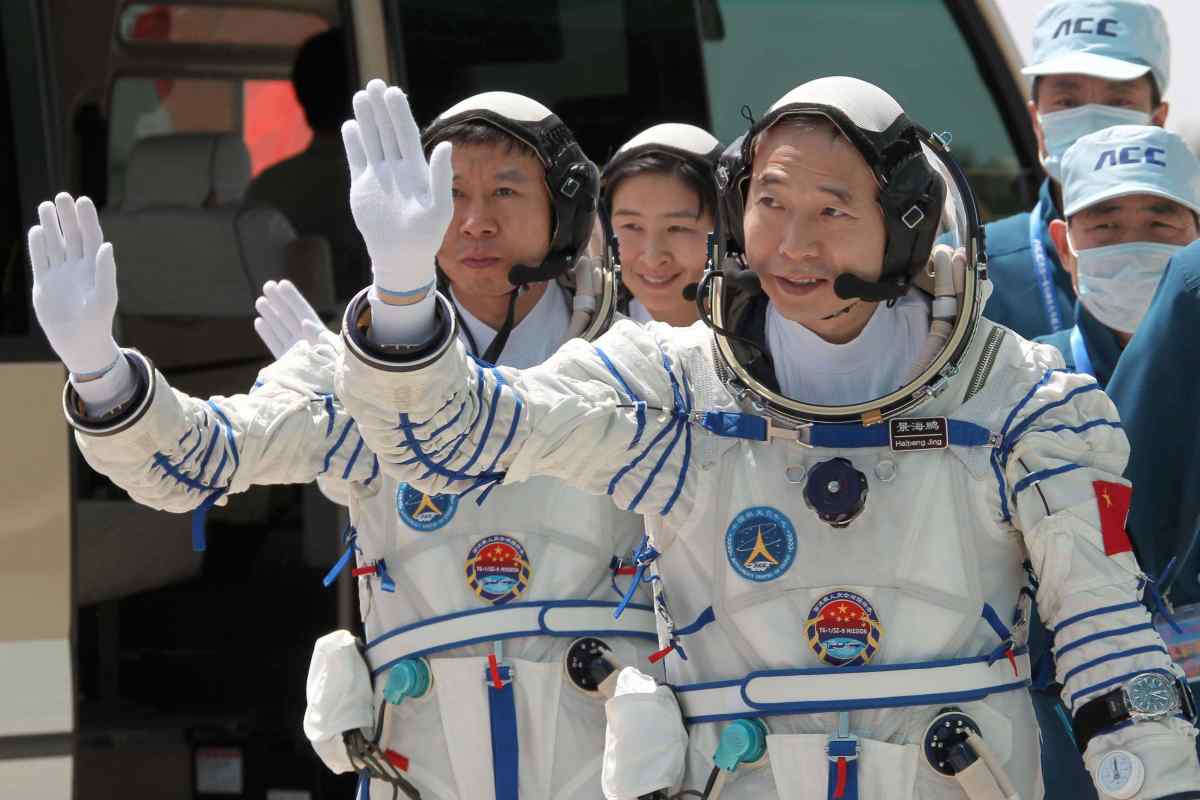The night in orbit offers little respite.
In low orbit, the Tiangong space station becomes the scene of constant activity that requires pinpoint precision. During their last extravehicular activity, Chinese astronauts had to face a challenge that did not stem from technical failures or scientific experiments, but from a silent enemy that multiplies the risks of each mission: space debris that accumulates in low Earth orbit and threatens to strike the structure of the complex.
The China Manned Space Agency’s schedule places the start of the extravehicular activity on 25 September at 19:45 (Beijing time), with Wang Jie as the first astronaut to leave the Wentian module. He was followed shortly afterwards by Chen Zhongrui, who was in charge of assisting with the installation of the equipment. Chen Dong, from inside Tiangong, managed communications with the control centre and supported his colleagues throughout the manoeuvre. The spacewalk ended in the early hours of 26 September at 1:35 a.m., when the two crew members closed the hatch after completing the planned agenda. The manoeuvre was carried out with the support of the station’s robotic arm and ground equipment.
Shields against debris: Tiangong’s strategy for surviving in space
During the spacewalk, the main objective was to install a protective device against orbital debris, designed to reinforce the most exposed areas of the station. The operation also included checking the condition of external equipment and structures, with special attention to systems that suffer greater wear and tear due to continuous exposure to the space environment. According to programme officials, this combination of installation and maintenance seeks to ensure that Tiangong maintains its operational capacity amid an increasingly debris-saturated environment.
The increase in space debris in low orbit is one of the factors that has most concerned agencies in recent years. Each launch adds fragments that, although small, reach speeds that multiply their capacity for damage. For China, reinforcing Tiangong is not a response to a specific incident, but rather a necessity to stay ahead of an increasingly complex scenario.

China is not the only country that has had to reinforce its station in the face of the threat of orbital debris. The International Space Station has had specific armouring systems for years, known as anti-MMOD shields, which protect its habitable modules from impacts from micrometeorites and space debris. The difference lies in the context: this is an infrastructure with more than two decades of service, which has needed to continuously adapt to an increasingly congested environment. On the ISS, this philosophy is embodied in Whipple and Stuffed Whipple type layered armour, with several hundred shields distributed across critical areas.
A comparison between Tiangong and the International Space Station helps to understand the scope of its protection systems. The Chinese station was completed in 2022 with a T-shaped configuration consisting of the Tianhe, Wentian and Mengtian modules. The ISS, on the other hand, began assembly in 1998 and completed its main segment in 2011, with a much larger and more complex structure. This difference in size and age explains why their shielding follows different logic: the ISS combines protections included in its design with reinforcements added over the years, while Tiangong integrates solutions designed from the outset for a more congested environment.
The end of this extravehicular activity does not mean a break, but rather the beginning of a new stage for the Shenzhou-20 mission. The three astronauts will continue with numerous scientific experiments and technological tests, as well as participating in celebrations on board linked to the Chinese calendar. The installation of additional armour has a clear objective: to sustain the safety of the crew and the integrity of Tiangong over time, which aims to establish itself as a stable base for space research in a more demanding orbital environment.

